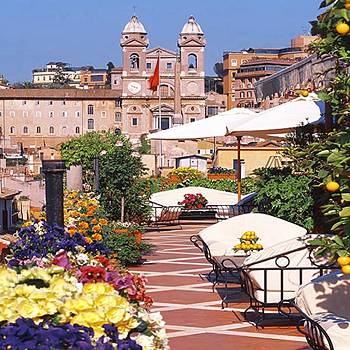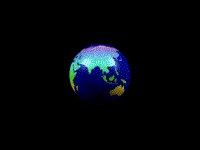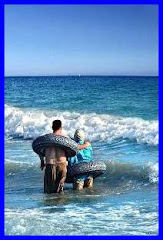



Wanting to buy a gift for my old school-friend visiting Egypt, I searched the shops downtown, in Garden City, and Zamalek. In each of those three districts, there was at least one shop selling handmade artifacts, which I enjoyed browsing through. But, to my dismay, each shop displayed beautiful appliqués and other crafts, all made of seashells and huge chunks of coral reef as the main centerpiece. How on earth are they still getting the coral reef, when it is, or should be, absolutely forbidden?
We exchanged gifts and then I grumbled about the shops all boldly displaying broken chunks of coral reef. She laughed and said I was becoming more ‘Americanized’ than she was, and admitted that it was a pity that we Egyptians are not really concerned with our own environment. She said that in Sharm El-Sheikh, everywhere you go, they sell handcrafts in the hotels’ boutiques or nearby shops, and even around the hotels’ swimming pools, all made of coral reef. Some ‘objects of art’ were turned into corner-table lamps, or simply used as house decorations, with other sea objects clustered around the coral.
To aggravate me even more, she said that most of the hotels that have been constructed there actually used explosives to make their artificial lakes, lagoons and swimming pools, disregarding the damage to the sea creatures, fish, and coral reef. Ironically, some of the same hotels afterwards were eventually named as “green hotels”, indicating that they were “environmentally friendly”! What a joke!
We are really self-destructive. How can we pretend to be aware of our environment, let alone CARE about it, when we ruin the environment with our own ignorance or greed? The beautiful Red Sea is ‘an endangered species’: it is in mortal danger.
Musing on the word “red” (El Bahr El Ahmar’ translates to The Red Sea, in Arabic) - researchers are still perplexed as to why this sea was named ‘red’. My theory is that the sun reflecting the crimson hues off the aura of the rocky hills surrounding it during sunsets, and mirroring it into the transparent sea, has inspired this name for earlier settlers. Yet again, it may be due to the unique coral reefs.
In “Habitat”, it stated that the Red sea possesses unique characteristics that cannot be found anywhere else on earth. The Strait of Suez and the Gulf of Aqaba close it in to the north, and the Strait of Bab El Mandeb (gate of tears) closes it in to the South at a depth of roughly 100 meters, forming a basin. This separates the Red Sea substantially from the system of currents of the Indian Ocean. Because of this 'semi-continuity' with the ocean, the Red Sea is an ecosystem of the Indo-Pacific variety. It is unique in that the Red Sea is home to around 20 percent of endemic fish species in the world, and for the particularly varied coral reefs (more than four hundred species of coral have so far been recorded). Because its deep waters can reach temperatures of 32 degrees centigrade due to volcanic activity on the seabed, the almost total lack of tides, and its regular currents - driving northwards in winter and southwards in summer - the Red Sea constitutes a fantastic and unrivalled botanical niche.
Marine turtles form a prominent part of the fauna of the Red Sea. The areas on the shore where the turtles choose as nesting sites are very limited to small number of sites in South Sinai and few spots on the south Red Sea coast. Many of these turtles have reported to lay their eggs on offshore islands. All the marine turtles of the Red Sea are considered threatened and both the green and hawk-bills are declared endangered species.
While reading ‘Global Plan of Action’, it mentioned that the coastline of Egypt is undergoing extensive habitat alteration, due to construction, including ‘dredge and fill’ operations of shallow areas, excavation of artificial lagoons, mining and quarrying. Suspended fine sediments resulting from these activities can inflict widespread damage to coral reefs, seagrass beds, mangroves and other marine life, over distances of dozens of kilometers from the source. Several urban centers have been developed along the coast at Suez, Hurghada and Sharm El Sheikh. As we know, Egypt is the site of the most extensive tourism development on the Red Sea. But, tourism development constitutes a serious threat to both the marine environment and the tourism industry itself, if not planned and developed on a sound environmental basis with the effective enforcement of environmental regulations.
Together with dredging, coastal reclamation probably represents one of the most negative impacts on the coastal marine environment of the Red Sea. Apart from the direct and permanent loss of habitat, landfill usually increases sedimentation. Inadvertent coral breakage by divers and improper mooring by diving and fishing boats, as well as damage due to sediment stir-up by diving activities, in addition to collecting corals, starfish, urchins, and other sea creatures, may ultimately cause loss of diversity in marine habitats and degradation of coral reefs.
‘Global Plan of Action’ also remarked that the Red Sea is unique and not found elsewhere in the world. Its enclosed nature, together with limited water exchanges with the Indian Ocean, considerably reduces the potential for dispersion of pollutants. This is especially so in the relatively shallow Gulfs of Suez and Aqaba, as compared to the main body of the Red Sea which is very deep along most of its length.
The predicted increase in number of people either visiting or working along Egypt's Red Sea coastline require more sewage disposal and discharges which deplete the quality of the very amenities which attract tourism in the first place: clean beaches, pleasant weather and the spectacular underwater reefs.
We should protect our God-given blessings, and not let our economical need for growth overlook the vital importance of “growing”, yet under professional supervision and management. I fear that after we have exhausted all possible space and ways of ruining the Red Sea and the Red Sea Coast, we will greedily look forward to ruining the Mediterranean Sea and the spectacular Northern Coast.
H.N.
























































































































